Types of Weed - The Different Kinds Of Weed
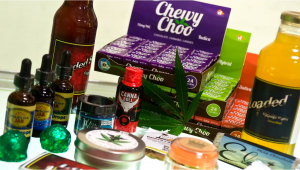
- 1. Various options for weed consumption
- 1. a. Flower
- 1. b. Edibles
- 1. c. Concentrates
- 1. d. Distillate
- 2. Major types of weed and effects
- 2. a. Indica
- 2. b. Sativa
- 2. c. Hybrid
- 2. d. Industrial hemp
- 2. e. Ruderalis
- 3. Thc vs cbd
- 4. Popular strains
- 5. Summary
- 6. Faq
- 6. a. What is the strongest weed?
- 6. b. What is the strongest strain of weed 2022?
- 6. c. What is the strongest strain of hybrid?
- 6. d. What is the best strain ever?
- 6. e. What strains have the longest-lasting high?
- 6. f. What is the rarest strain?
As there’s more than one way to skin a cat (we’re referring to that furry rascal who’s just munched through half of our seedlings), so there’s more than one way to classify weed seeds. From the way this plant grows to the way it is consumed or acts upon you – we shall have a look at all possible types of weed. Read this post, and all your questions will be answered and whatever fancy term there is, you'll be brandishing it like a pro.
We’ll start our review of types of weed with various products a consumer may find at a dispensary (or in the backpack of their ‘guy’), then proceed to a rather controversial Indica-Sativa distinction, talk of high-THC and CBD-rich varieties, and finish with a quick probe into the overwhelmingly huge realm of commercial weed strains.
Various Options for Weed Consumption
For centuries, weed, also often called marijuana, pot, or simply weed, was consumed in its natural form, meaning that people were smoking dried flowers and leaves of the plant. Another popular traditional method of use was smoking hash, or weed resin.
In the 19th and early 20th centuries, Western medicine used quite an array of various weed-based tinctures and oils that were sold at pharmacies. Starting from about the 1930s – when ‘devil’s weed’ was outlawed as a ‘dangerous drug’ – we were back to smoking, with basically no other options.
Luckily, as more and more countries and states legalize marijuana, we see a plethora of new exciting products and methods of consumption that trickle even into the black market.
Flower
Hands down the most popular way to use marijuana, dry flowers (buds) are the staple at any dispensary. After you have gound them, you can roll some into a marijuana cigarette (joint) or put it in the bowl of a pipe, bong, or hookah (chillum). Some smokers, especially in Europe, mix ground-up weed with tobacco and roll a ‘spliff’ or take a dry tobacco leaf (e.g. from a cigar) and roll a ‘blunt’. You can also vaporize buds using a desktop vaporizer or portable vaporizer.
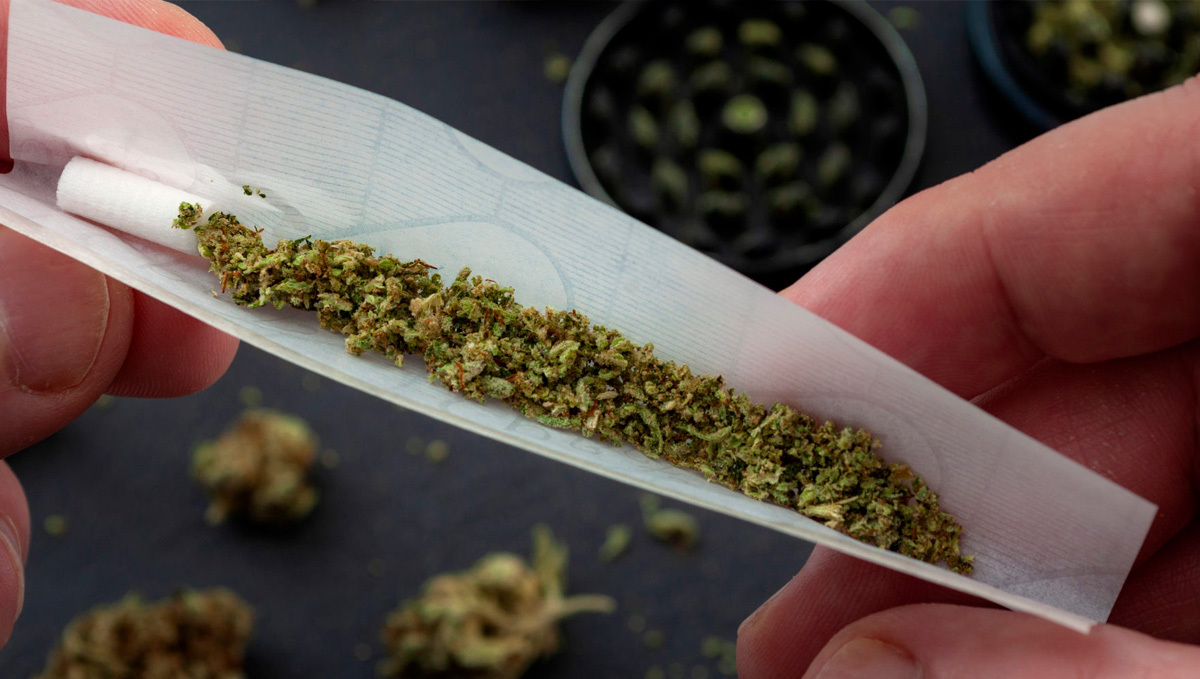
While legal markets tend to offer well-trimmed nuggets of uniform size and texture, street dealers may sell you products of inferior quality – they may be hard-pressed for more discreet transportation and storage (‘brickweed’), may consist of loose plant material (‘shake’), or contain everything from leaves to seeds to even small twigs.
Pros
Weed flowers are widely available and offer an impressive range of flavors, potencies, colors, and textures. The effect comes on quickly, leading to almost immediate symptom relief and allowing you to stop before the effect becomes overwhelming. Buds are also recognized as being “full-spectrum”, meaning that they contain the full host of phytochemicals that the plant has to offer. Many smokers value this because cannabinoids, terpenes, and other constituents don’t work in isolation. These molecules work in a synergistic way that influences both the recreational high and the potential medicinal effects.
Cons
Smoking buds is not the best way of consumption, especially for medical patients and people with lung issues. However, vaporization excludes these risks. Plus, it’s also hard to consume a highly accurate dose when using buds. Each part of the flower will contain slightly different levels of trichomes, cannabinoids, and terpenes. Because some medical users require an accurate dose within milligram quantities, flowers don’t offer the best option.
Edibles
Oral ingestion of weed has been known for centuries, but it wasn’t very popular until recently. Well, maybe with an exception of pot brownies (space cakes) that have been offered in Amsterdam’s coffeeshop since the 1970s. The legality of medical and recreational marijuana in US states has changed this scene, and weed-infused products are all the buzz now. Weed edibles serve up a much more hard-hitting high because the route of administration changes the way the body processes THC. As it passes through the digestive system, the body converts this psychoactive molecule into a metabolite known as 11-hydroxy-THC.

Much like THC, this molecule also binds to the CB1 receptors of the endocannabinoid system in the brain to produce a high. However, it produces a much more powerful and long-lasting effect. The active constituents of the plant, such as THC, are all fat-soluble, so to cook marijuana edibles one first needs to infuse oil or butter with it. Besides, THC needs to be decarboxylated (activated) with a certain amount of heat. After that, you can put weed-infused oil or cannabutter in any dish that requires regular oil or butter.
Legal weed producers also offer chewing gums, gummy bears, mints, syrups, and even beverages. Since you can’t dissolve THC in water, beverages use a clever high-tech trick called nanoemulsions.
The absorption of edibles by your body takes some time – about 1 or 2 hours before you feel their effect – and the high lasts much longer.
Pros
Among various types of marijuana, edibles are arguably the healthiest and the most discreet. Their longer effect is great for extended symptom relief in medical patients.
Cons
Because the effect builds up slowly, it’s easy to overindulge. Patients with nausea may find it hard to ingest edibles without vomiting. Edibles are also infamous for their potent effects. Many users underestimate the power of these products and quickly find themselves in an overwhelming experience. If you’re new to edibles, always follow the golden rule: Go low and slow.
Concentrates
The way concentrates are made is you take weed plants and process them in such a way that they only yield cannabinoids (active compounds) and terpenes (aromatic substances) in concentrated form. The rest is inert plant matter, and you can throw it away. There are different methods to obtain concentrates: CO2 extraction, butane extraction, rosin technique (simultaneously applying heat and pressure), etc.
Regardless of how concentrates are made, they are much more potent than their source material. While buds of a good powerful strain may contain 20% THC, its level in a concentrate can easily reach 80%.
Concentrates are great in that you don’t have to inhale the smoke from burning all those inert plant tissues. Their high levels of THC and other cannabinoids also appeal to medical patients who need to medicate constantly and have developed a tolerance. On the other hand, casual smokers may get overwhelmed by just one toke, and there’s a growing concern that habitually using such powerful forms of marijuana may lead to addiction more frequently.
Concentrates can be loose and powdery, liquid, semisolid, or solid, and here are the descriptions of some of their most popular varieties.
Wax
Resembling beeswax or earwax, this type of concentrate is a viscous, taffy-like (or dryer and slightly crumbly) substance with a tan color. Wax is convenient to handle as you pick up some of it with a kind of a metal ‘toothpick’ and put it on the heated ‘nail’ of a dab rig. Then, all you have to do is inhale the vapor.
Shatter
Shatter is a more solid form of marijuana concentrate than wax. It’s brittle and shatters easily. You use it in the same way – in a kind of a pseudo-bong called dab rig – only shatter is slightly more difficult to handle because its crumbs are not sticky and you might drop them.
Oils
Oils, such as butane hash oil (BHO) or Rick Simpson oil, are light- or dark-colored thick liquids that don’t really contain any oils (fats). Rather, they just seem oily. In fact, they consist mostly of cannabinoids, terpenes, and trace amounts of solvents, such as butane or alcohol. You can add them to food, take them under the tongue, or vaporize them in vapes that are designed to be used with liquid concentrates.
Capsules
Capsules are really closer to edibles than concentrates because THC, CBD, and other cannabinoids in them are dissolved in vegetable oils. The only difference is that with edibles you put these oils in your dishes and with capsules you just swallow them with water. Capsules are probably the most discreet way to medicate because people swallow medicine and supplements all the time, and no one takes notice.
Tinctures
Tinctures are an ancient form of taking your medication orally. As a carrier, tinctures generally use alcohol which is a great solvent for THC and other cannabinoids. Sometimes, glycerin is used, either alone or in combination with alcohol. If you put a weed tincture under the tongue, the effect comes quite fast – in about 15 minutes – because there are a lot of blood vessels under the tongue which absorb the active ingredients and put them right into your bloodstream. If you add a few drops of the tincture to your food, it’s the same as eating edibles (see above).
Hash
Among all types of weed concentrates, hash, or hashish, is the most ancient. It’s very easy to collect resin from the weed plant, and farmers have been doing this for centuries. The crudest method is to roll fresh flowers in your hands so that the resin sticks to them. Then you can roll the resin into a dark-colored ball. This is called ‘hand-rubbed hash’ or ‘finger hash’.
Alternatively, you can take dried flowers and use a sieve to collect tiny resin glands (trichomes) that fall from them. This dry-sift hash, or kief, is loose or powdery and lightly colored compared with hand rub hash. Sometimes, it’s pressed into blocks of various sizes for easier storage and transportation.
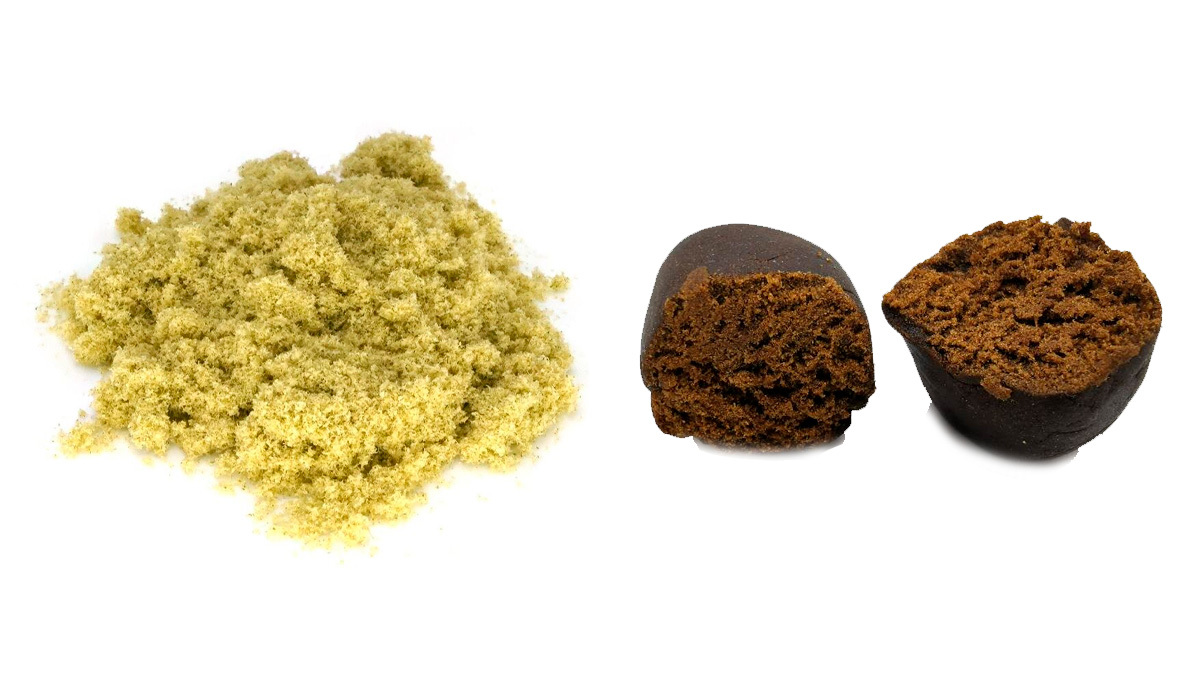
Similar to kief is ice hash (ice water hash). Sometimes, they call it ‘bubble hash’ because it bubbles when you heat it with a lighter. This form of hashish looks the same – a light-colored loose mass of trichomes but its method of production is different: you put fresh or dried buds and ‘sugar leaves’ into a bucket with ice-cold water which makes trichomes very brittle and they fall off easily when you stir the mix. Then you catch the trichomes using a series of mesh screens.
Distillate
This is the purest form of weed concentrates. As a source, distillers take any other whole-plant concentrate, such as weed oil, and further purify it, removing fats, chlorophyll, and waxes but also aromas and flavors. What is left is the odorless but super potent mix of cannabinoids. Distillates can be used to manufacture edibles, tinctures, vape cartridges, and other products.
Pros
Distillates have a very consistent chemical composition and quality and contain minimal impurities. They also can be used to extract specific cannabinoids from the mix.
Cons
They are odorless and tasteless, cost more, and you’ll need proper training in chemistry and special lab equipment to make them. The effect of distillates can be overwhelming for new users.
Major Types of Weed and Effects
Dividing weed plants into Indica and Sativa varieties is a time-honored tradition. Most weed enthusiasts believe that these two are very different in the way they grow and the way they smoke. We’d say that this distinction is useful as a rough approximation, but don’t put too much trust in it. More and more research shows that many commercial Indicas and Sativas are totally mislabeled and their actual genetic composition is all over the place.
Originally, these terms were created and applied by botanists in order to differentiate between the morphological characteristics of these subtypes of weed. However, pop culture, not science, quickly started to use these terms to describe the effects of a strain. While sometimes accurate, this designation doesn’t always hold true. It’s now known that terpenes—aromatic hydrocarbons found within weed buds—also determine whether a strain is energizing, stoning, or somewhere in between. Both Indica and Sativa subtypes possess varying levels of these compounds; their effects aren’t dictated by their appearance alone. However, this shouldn’t bother you too much because if it looks like a duck, swims like a duck, and quacks like a duck, then it’s a duck (Indica/Sativa) for all intents and purposes.
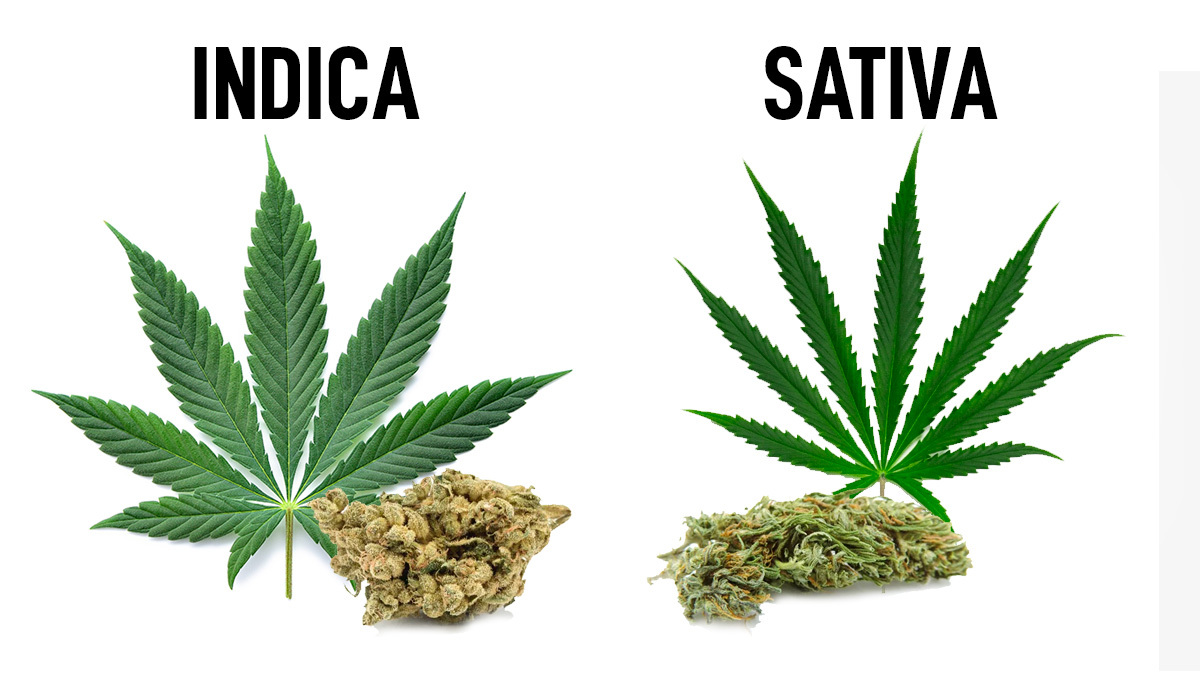
Indica
Cannabis Indica hails from the mountainous region of Hindukush in Afghanistan and has naturally adapted to a rather harsh environment that favors small height, bushy structure, short internodes, compact flower clusters, and a lot of resin. Indica plants mature quickly and – for whatever reason – have broad, roundish leaves that are dark green.
Effects
Smokers believe that the principal effect of Indica is the so-called body stone – a blissful feeling of relaxation when you don’t want to move a muscle and feel waves of euphoria coursing under your skin. Indicas are said to induce ‘couch-lock’ and, in larger doses, make you fall asleep.
Medical Uses
The sedating and narcotic effects of Indica are great for patients with various physical ailments. Due to its heavy-handed relaxation, it’s best to use Indica as a nighttime smoke because, if you take it during the day, it may induce fatigue and kill motivation.
Muscle Spasms
Many multiple sclerosis (MS) patients swear that medical marijuana helps them with muscle spasticity, stiffness, cramps, and associated pain. Some believe that Indicas are more effective than Sativas in easing these symptoms.
Pain
Research shows that pain is the most common reason people turn to medical marijuana. They say it helps with the pain of various origins, including migraines and other headaches, fibromyalgia, and, above all, neuropathic pain (e.g. in MS). Indicas – as more body-oriented than Sativas – seem to be better painkillers.
Anxiety
Soldiers who fought in Afghanistan and tried the local hash (made of Indica, of course) reported that for a few hours it made them oblivious of the daily dangers of war. People use anxiolytic properties of Indica in peacetime, too. Just don’t forget that low doses of THC may reduce anxiety and higher doses may have the opposite effect – make you more anxious or even paranoid.
Insomnia
Weed use for insomnia is a very controversial subject. While weed – especially of the Indica variety – will certainly help you fall asleep and stay asleep, the situation may get even worse as soon as you stop the use. Weed withdrawal (mild as it is) can nevertheless turn even a healthy young person into an insomniac for several days. So proceed with caution!
Growing
Indica was a godsend for generations of illegal growers because indoors you need compact and fast-flowering plants. Besides, Indicas tend to produce denser and heavier buds which makes them more rewarding cultivars. Their short flowering time also benefits growers who live in climates with short summers – where Sativas have no chance to mature but Indicas do.
Sativa
Cannabis Sativa was first described in the 18th century by Carl Linnaeus who knew only this one variety cultivated in Europe and America, and it was a tall plant with narrow light-green leaves, fibrous stalk and branches, a very small amount of resin, and insignificant psychoactive effects. In short, it was what we now call hemp.
Today, when we say Sativa, we usually mean something else. Yes, it’s tall, but it’s also quite resinous and its buds pack enormous potency. Sativa strains on the modern weed seeds market all hail from either South Africa or such tropical countries as Thailand, Vietnam, Columbia, Mexico, Hawaii, etc. They are so psychoactive probably because the harsh tropical sun which is heavy on the UV spectrum led to the selection of the most resinous and THC-rich strains. (One theory maintains that THC protects weed from UV radiation.)
Effects
Effects of Cannabis Sativa are quite different from those of Indica. They energize the user, lift their mood, and make them talkative, social, focused, and motivated. When you smoke a Sativa in the evening, it’s very difficult to fall asleep, and in the morning, it can act like coffee. Nevertheless, taking too much can make you disoriented and dizzy to the point that you pass out.
Medical Uses
The characteristic psychoactive effects of Sativas make them more suited to treating mental conditions rather than physical ailments. However, THC is THC, and it can still kill pain and fend off nausea, and in Sativas, it does so without making you lazy or tired. So, if you prefer an active lifestyle, you should experiment with Sativas and Sativa-dominant strains.
ADHD
One of the main symptoms of ADHD is the inability to focus, and many smokers report that weed (and especially Sativa) makes it easier for them to concentrate on the task at hand and maintain this focus for hours.
Appetite Stimulant
We still don’t know exactly why weed makes us crave food so much. One theory says it’s because THC stimulates receptors in our olfactory bulbs so that we’re seduced by the appetizing smells. Be it as it may, ‘munchies’ are a real thing, and weed can stimulate appetite even in people with wasting syndrome as well as in AIDS and cancer patients.
Depression
The mood-lifting property of Cannabis Sativa makes it a good candidate for an antidepressant, but please be aware that research on weed use for depression is very limited. We still don’t know very much and can’t give you any medical advice. (This goes for any condition really, and you should always consult a health professional before deciding to self-medicate.)
Growing
Sativa is not the easiest type to grow because indoors, it tends to fill all available space and demand more, and outdoors, tropical varieties often start flowering when it’s too late in the season, so they never get a chance to mature. Nevertheless, Sativas have so many unique and desirable characteristics that breeders work hard on keeping them while adding such Indica traits as manageable size and short flowering time. This leads to the emergence of great Sativa-dominant hybrids that anyone can grow.
Hybrid
Here’s the bad news for all you Indica and Sativa purists: most of the strains on the market are the hybrids of the two. But is it really that bad? Far from it.
First of all, by combining very distant lineages, hybrids are especially hardy and healthy plants. There’s even a special term ‘hybrid vigor’ which speaks volumes. Second, hybrids give you some interesting combinations in terms of cultivation and effects.
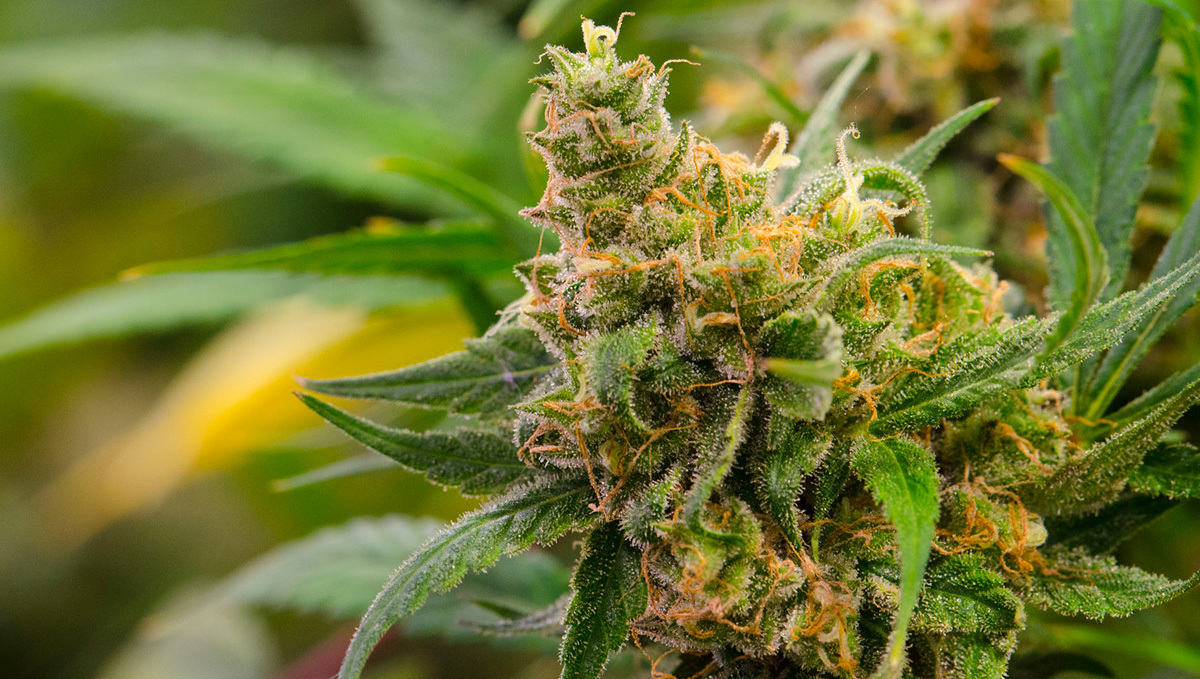
Effects
We have described the effects of Indica and Sativa at some length above, but if you mix these two in a hybrid, the high tends to start with an uplifting, energizing rush of Sativa and end with a more sedating and relaxing Indica ‘stone’.
Growing
Sativa-like open bush structure with long internodes is hardly a desirable feature for most indoor growers because they simply don’t have enough vertical space, and, besides, tall plants aren’t very good performers under artificial lights. And the longer flowering time of Sativas makes them unsuitable for most temperate climates.
These are enough reasons for breeders to try and curb the tropical temperament of pure Sativas with Indica influence. That’s why hybrids are so popular – they produce relatively short and fast plants but with effects that may range across the whole Indica/Sativa spectrum.
Industrial Hemp
As we’ve explained above, hemp isn’t really a different type of plant but the same species – Cannabis Sativa. The important difference is the levels and ratio of THC and CBD in it. With lower levels of THC and higher levels of CBD, hemp has zero recreational appeal, and, frankly, it’s not cultivated for its cannabinoid content in the first place. Rather, its main value as a cash crop is its fiber.
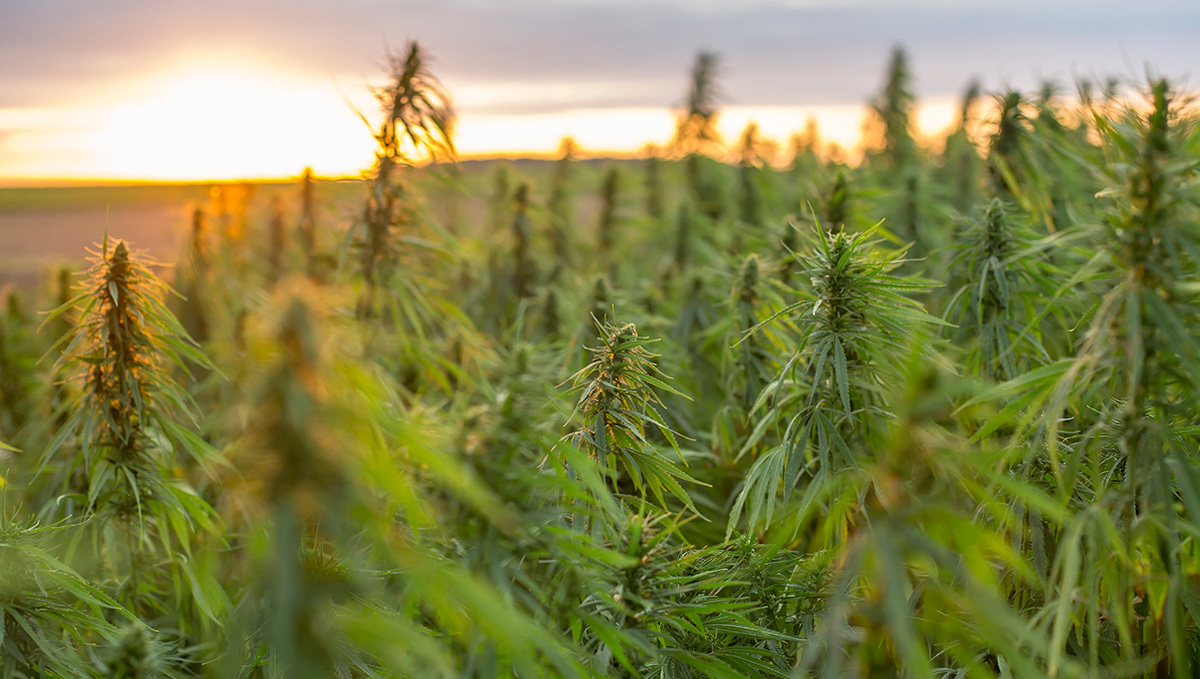
Uses
According to a famous weed advocate Jack Herer, hemp is the most versatile crop in the world. Some of its many uses have been known to mankind for centuries, others are discovered all the time. And when we think this plant has no more surprises up its sleeve, creative minds come up with yet another way to make our life better with hemp
Food
A well-known fact about weed seeds is that they contain those exact amino acids that are essential for human well-being. No other seeds, fruit, or legumes have a chemical composition so finely tuned to make us fit and healthy. They’re also rich in good unsaturated fats, and including them in your diet contributes to longevity.
Fibers
Hemp is a very fibrous plant and can be turned into all kinds of natural, hypoallergenic, robust, and durable fabrics. The word ‘canvas’, by the way, comes from ‘cannabis’. In the past, both the merchant fleet and the navy depended on hemp not only for canvas but for all kinds of ropes as well. One of the reasons Napoleon went to war with Russia was that the Russians wouldn’t stop selling hemp to the Emperor’s archenemy – Great Britain.
Fuel
Hemp seed oil can be turned into biodiesel, but, more importantly, cellulose can be made into ethanol which is a very efficient form of fuel as well. Of course, any plant matter contains cellulose, but weed is a champion of producing the largest biomass in one season.
Building Materials
Hemp fiber provides stability to ‘hempcrete’, a wonderfully light but strong building material with a reduced carbon footprint compared with regular concrete. ‘Hempcrete’ blocks also make walls better insulated against cold and heat. Hemp fibers retain integrity in humid conditions and are perfectly non-toxic.
Medical Benefits
The CBD hype of recent years made the demand for the substance skyrocket, and the only way to meet this global demand is to distill CBD from hemp (because hemp is legal almost everywhere while medical marijuana is still illegal in most countries). So, besides obvious industrial uses, hemp can be of therapeutic value as well.
Strangely, some European countries, including Italy, allow the sale of hemp for smoking. These buds with extremely low THC levels (called ‘cannabis light’) look and smell like your regular ‘dank’ – compact, beautifully trimmed, and sticky – but their only effect is that of mild relaxation of the mind. They have the same health benefits as other CBD products, and their side effects are the irritation of the airways caused by smoke.
Growing
Hemp is among the easiest crops. If you grow it for seeds, you have to make sure the chosen strain matures in your climate. However, most hemp varieties (with less than 0.1-0.2% THC) are early-flowering plants, so there are usually no issues with that. Growing hemp for fiber is even easier as this plant doesn’t require many fertilizers and adapts its bush structure to the number of seeds you sow per square area. The only difficulty will be meeting legal regulations because authorities tend to view this crop with suspicion.
Ruderalis
Cannabis Ruderalis was described only recently as a small and flimsy feral plant growing in Siberia and some parts of Northern Europe. This subspecies has adapted to harsh climate conditions and short summers, so they have a very short life cycle and start flowering automatically in contrast to other types of weed that enter the flowering stage as summer ends and fall begins.
Effects
Ruderalis has an extremely low cannabinoid content, and nobody uses it for recreational purposes. The effect is there but you have to smoke a lot to slightly cloud your mind and feel a weak buzz, and it all subsides within a half hour.
Growing
With no recreational value and too small to be of any use as industrial hemp, Ruderalis was long considered a worthless plant but eventually turned out to be among the most useful. The Joint Doctor and other pioneer breeders have discovered that one can add a small of Ruderalis DNA to different types of weed and get a cultivar that is still big, productive, psychoactive, and fragrant but also flowers automatically and finishes incredibly fast. Such plants are called autoflowers, and they are arguably the most popular type of seeds sold today.
THC vs CBD
Now that the whole world is aware of CBD and its medical benefits, more and more growers and smokers demand CBD-rich varieties. However, they are still a niche product in both seed shops and dispensaries as most people prefer their weed to be rich in THC.
When choosing between different types of weed, most customers pay attention to the levels of these two cannabinoids in their buds. Next in their list of considerations are the genetic type (Indica or Sativa) and the terpene profile (smell and taste).

High-THC strains are the Holy Grail for long-time recreational smokers and medical users who’ve built up a high tolerance but may not suit casual smokers and first-timers who may experience unpleasant overdoses every time they smoke too potent buds. They should start with THC levels in the 10-15% range.
Some people may experience anxiety and paranoia from too much THC. For them, 1:1 THC:CBD varieties may work best because one can mitigate the anxiety-producing effects of the other. And finally, if you only need the therapeutic benefits of CBD and no mind-altering nonsense, choose a high-CBD weed with the maximum percentage because there could never be enough of a good thing.
Popular Strains
Knowing your way around the different types of weed is important, but often it’s easier to just choose some strain that has become a household name over the years. With these highly coveted varieties, the potency, the effects, and the flavors are known in advance because everyone seems to have tried them and is glad to share their experience with the rest of the world.
We have chosen a few such strains that, time and again, are featured in various top lists of the most popular weed strains ever. They range from long-time classics of the European seeds market and Amsterdam’s coffee shops to the US dispensaries' longtime darlings to the most explosive terpene bombs of today.
| Strain Name | THC % | Flavor | Autoflowering Version |
|---|---|---|---|
| White Widow | 15-25 | wood, flowers, earth | White Widow Auto |
| Northern Lights | 16-21 | spice, pine, hash | Northern Lights Auto |
| Cheese | 15-20 | cheddar, skunk, earth | Cheese Auto |
| OG Kush | 19-26 | skunk, citrus, spice, pine | OG Kush Auto |
| Sour Diesel | 18-26 | gas, skunk, citrus | Sour Diesel Auto |
| Blue Dream | 17-25 | sweet, blueberry | Blue Dream Auto |
| Pineapple Express | 16-26 | pineapple, spice, wood | Pineapple Express Auto |
| Girl Scout Cookies | 17-28 | sweet cookies, mint | Girl Scout Cookies Auto |
| Gorilla Glue | 18-25 | gas, coffee, earth | Gorilla Glue Auto |
Summary
We hope our post has given you an idea of how weed can be classified into different types based on its origin (Sativa/Indica), forms of its final product (flowers, edibles, concentrates, etc.), and THC vs CBD content. It’s easy to understand and memorize before your planned visit to a dispensary or seed shop, or you can bookmark this page for later reference if you want. Thanks for reading and we wish you happy explorations in the world of weed!
FAQ
What is the strongest weed?
The strongest lab-tested samples of weed nowadays have over 30% THC. Different sources have different lists of champions, and we have compiled them in the table below.
A word of caution: Even if many of these strains are available in seed form or sold as buds in dispensaries, it doesn’t mean that they have the same jaw-dropping potency. These varieties definitely have the POTENTIAL to be that strong but only the best of the phenotypes and in the hands of a master grower. Hoping to get these results in your own home garden is like thinking you can go for your regular morning jog and break an Olympic record.
| Brownie Scout | 37.5% | Future #1 | 37.28% |
|---|---|---|---|
| The Toad | 37% | Godfather OG | Over 34% |
| Chemdawg | 32.13% | Strawberry Banana | 31.62% |
| Grease Monkey | 31% | Chocolate OG | Close to 30% |
| Bruce Banner #3 | Up to 30% | Pacman OG | 29% |
| 99 Problems | 28-30% | Gorilla Glue #4 | 27-30% |
| Irish Cream | Over 27% | White Tahoe Cookies | Over 27% |
| Blue Walker | 26.77% | Durban Kush | 25-27% |
| Purple Punch | Over 26% | Ghost Train Haze | 25-27% |
What is the strongest strain of weed 2022?
According to HighTimes, the world record of the strongest strain ever, which was set in 2019 but still stands as of 2022, was 37.5% THC for the in-house strain Brownie Scout grown by an Illinois marijuana producer Green Thumb. Another world record was set in 2018 by the strain Future #1 from 7 Points Oregon. This strain of weed was tested at 37.28 percent.
What is the strongest strain of hybrid?
There are many potent hybrid strains out there, but if you want one of the strongest and at the same time easy to find, the best choice might be Gorilla Glue #4, or simply GG4. This hybrid strain is a staple in many dispensaries and is also widely available in seed form. The plants grown from these seeds are incredibly sticky and routinely pack 27-30% THC. GG4 is a cross of Chem’s Sister, Sour Dubb, and Chocolate Diesel.
What is the best strain ever?
The answer really depends on who you ask. As you have probably figured out from this article, there are so many different types of weed and people have so many different tastes that everyone has their own personal favorite. Some cherish fond memories of classics like White Widow, Northern Lights, Skunk #1, and AK-47, others swear by new designer varieties from the US, such as Gelato, Bruce Banner #3, and Girl Scout Cookies. Skim through this post again, and you’ll find all the usual suspects.
What strains have the longest-lasting high?
The rule of thumb is that the stronger the high, the longer it lasts. There are exceptions, of course, and you may come across some buds that give you an intense rush almost immediately and taper next to nothing within half an hour. But, generally, if you need a long-lasting high, choose the highest THC strain. Alternatively, use edibles as they take their sweet time to kick in but, once they do, the effect last seemingly forever.
What is the rarest strain?
Generally, the rarest genetics that no money can buy are those that grow naturally in far-off and hard-to-reach places and draw upon unique local soils and other features of the landscape and climate for their one-of-a-kind flavors and effects. An example is the Ketama strain which you can find in seed form but can never make it smell and taste the way the Moroccan original tastes and smells. For that, you need the native soil of the Ketama valley. Other examples include Black African Magic, Oaxacan Highland, Malawi Gold, and other tropical Sativas.
External Links
- The Cannabis sativa Versus Cannabis indica Debate: An Interview with Ethan Russo, MD, Cannabis Cannabinoid Res., Jan 1, 2016
- Cannabis sativa and Cannabis indica versus “Sativa” and “Indica”, In book: Cannabis sativa L. - Botany and Biotechnology (pp.101-121), 2017
- Exploring cannabis concentrates on the legal market: User profiles, product strength, and health-related outcomes, Addict Behav Rep., 17 Aug 2018
- Cannabis (Marijuana) and Cannabinoids: What You Need To Know, U.S. Department of Health and Human Services - National Institutes of Health








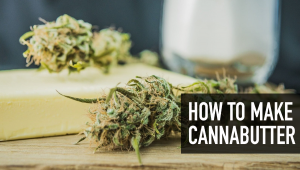

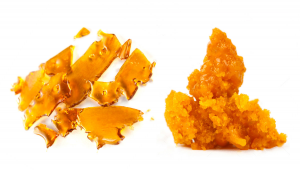
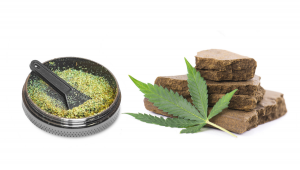

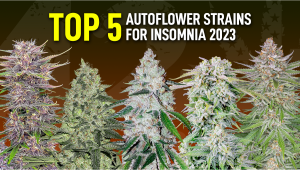


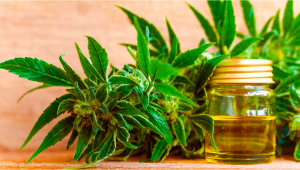
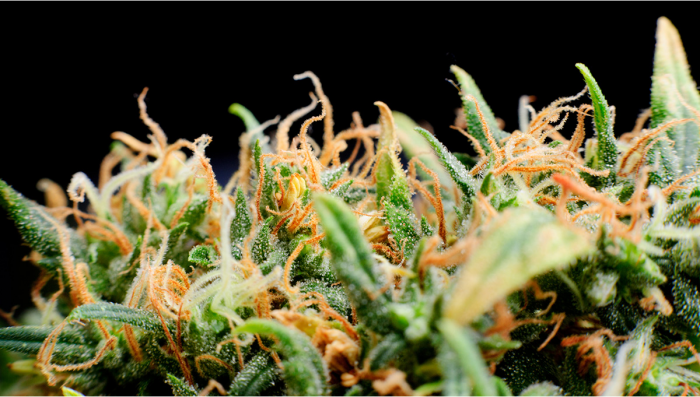
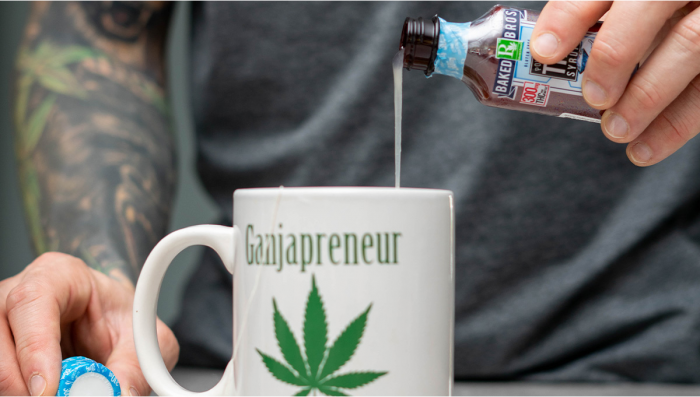
Comments